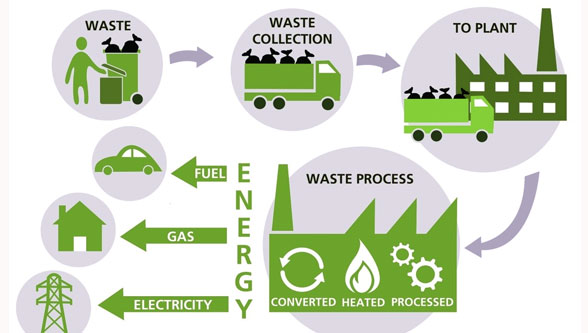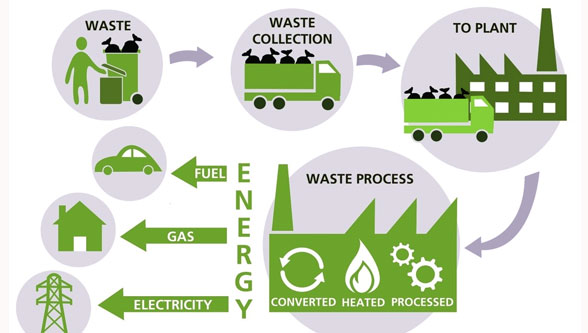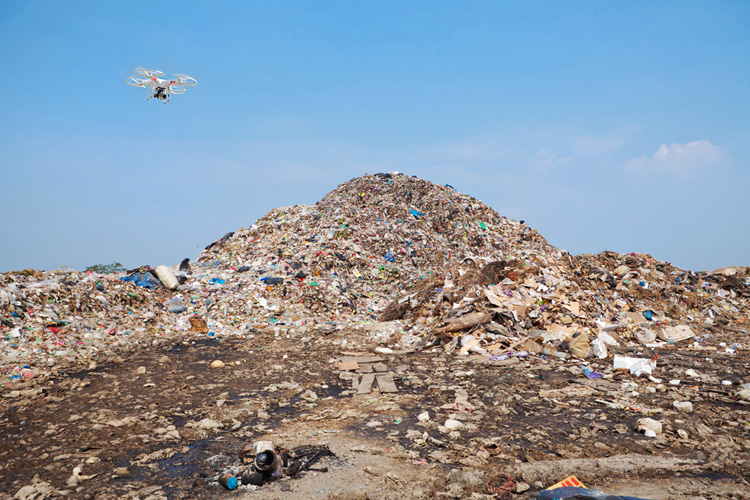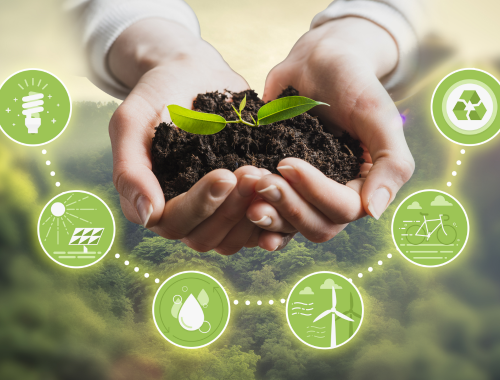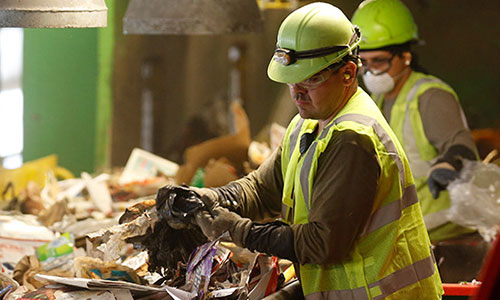Introduction The waste-to-energy (WtE) industry has gained significant importance and relevance in Asia due to the growing need for sustainable waste management solutions. This article aims to provide an overview of the historical background, key concepts, main discussion points, case studies, current trends, challenges, and future outlook of WtE in Asia. Historical Background Evolution of Waste Management Practices in Asia Asia has witnessed a significant evolution in waste management practices over the years. With rapid urbanization and population growth, the volume of waste generated has increased exponentially. Traditional waste management methods, such as landfilling and open dumping, have proven to…
Author: sohailkhan2k22
Introduction Waste-to-energy technologies have gained significant attention in developing countries as a sustainable solution for waste management. This article aims to explore the relevance and importance of waste-to-energy in addressing waste management challenges and discuss its potential benefits. Historical Background In developing countries, waste management practices have traditionally been inadequate, leading to environmental degradation and public health risks. The emergence of waste-to-energy technologies has offered a promising solution to these issues. Notable milestones in the development of waste-to-energy technologies include the introduction of anaerobic digestion and advancements in incineration and gasification processes. Key Concepts and Definitions Waste-to-energy refers to the…
Introduction Food waste to energy conversion has become a crucial solution for sustainable waste management practices worldwide. In this article, we will explore the South Korea model, which has gained significant attention due to its innovative approach to food waste conversion. By providing a comprehensive analysis of the historical background, key concepts, main discussion points, case studies, current trends, challenges, future outlook, and conclusion, we aim to highlight the relevance and importance of the South Korea model in addressing global food waste issues. Historical Background In order to fully grasp the significance of the South Korea model, it is important…
Introduction The waste-to-energy sector has witnessed significant advancements in recent years in the field of biogas production. This article explores the various innovations in waste-to-energy technologies and their relevance in the context of environmental sustainability and renewable energy goals. Historical Background The evolution of waste management practices and the emergence of waste-to-energy concepts have paved the way for the development of biogas production and utilization. Early developments in this field laid the foundation for the milestones achieved in waste-to-energy innovations. Key Concepts and Definitions Waste-to-Energy involves the conversion of waste materials into usable forms of energy. Biogas, a key component…
Introduction: Sustainable power plants have gained significant importance in recent years, as the world seeks cleaner and more efficient energy sources. This article provides a comprehensive overview of the relevance of showcasing waste-to-energy (WtE) facilities’ architectural ingenuity. By exploring the background of sustainable power plant technologies and defining key concepts, we can delve into the main discussion points surrounding architectural innovations, design principles, and community engagement. Furthermore, this article highlights case studies, current trends, challenges, and the future outlook for WtE architecture, emphasizing the need for continuous innovation in the pursuit of improved energy efficiency. Historical Background: Sustainable power plant…
Introduction The Industrial Applications of Waste-to-Energy (WtE) have emerged as a sustainable solution to tackle the ever-increasing problem of waste management while also providing a renewable source of energy. This article aims to provide an overview of the importance and relevance of this topic in the context of waste management and sustainable energy production. Historical Background Waste-to-Energy technologies have a rich history that dates back several decades. Initially, WtE technologies were primarily focused on incineration as a means of waste disposal. However, over time, these technologies have evolved to include various other methods such as anaerobic digestion and gasification. This…
Introduction Wastewater treatment is a crucial aspect of maintaining public health and environmental sustainability. One often overlooked aspect of this process is the potential for power generation from sewage sludge. This article provides an overview of power generation from sewage sludge and highlights its relevance in wastewater treatment. Additionally, it explores the importance and potential benefits of utilizing sewage sludge for energy production. Historical Background The use of sewage sludge in wastewater treatment has a rich historical background. Initially, the primary objective was to safely dispose of the sludge. However, as the understanding of energy generation improved, the concept of…
Introduction The topic of emerging waste-to-energy technologies is crucial in today’s world due to the increasing concern over waste management and the need for sustainable energy sources. This article aims to provide a comprehensive overview of the subject, highlighting why it is interesting and why readers should care about the advancements in this field. Historical Background Waste-to-energy technologies have evolved significantly over time. Early forms of WtE date back to ancient civilizations, where waste was utilized for heating and cooking. The introduction of incineration in the 19th century marked a breakthrough in waste management. Subsequently, anaerobic digestion and gasification emerged…
Introduction Waste-to-energy (WtE) technologies have gained significant attention in recent years as a sustainable solution for managing waste while also generating clean energy. This article aims to compare and evaluate different WtE technologies for their efficiency. By understanding the various options available and the factors influencing their efficiency, we can make informed decisions to optimize waste-to-energy conversion processes. Historical Background WtE technologies have a rich history, dating back to the early 20th century when incineration became a popular method for waste disposal. Over time, advancements in technology and environmental concerns have driven the evolution of WtE processes. Key milestones, such…
Introduction The increasing concerns about climate change and global warming have placed a spotlight on the concept of Green Energy Solutions. As the world heavily relies on fossil fuels, alternative energy sources that can reduce greenhouse gas emissions have become essential. Waste-to-Energy (WtE) technology is one such solution that offers promise in addressing this pressing issue. Importance of Reducing Greenhouse Gas Emissions Reducing greenhouse gas emissions is of utmost importance for mitigating the adverse effects of climate change. The greenhouse effect, caused by gases like carbon dioxide and methane, traps heat in the Earth’s atmosphere, leading to a rise in…
Introduction Waste-to-energy (WtE) and landfill diversion have emerged as crucial solutions for minimizing waste disposal and promoting sustainable waste management practices. This article explores the historical background, key concepts, benefits, challenges, case studies, current trends, controversies, future outlook, and the significance of WtE and landfill diversion in achieving environmental sustainability. Historical Background Waste disposal practices have existed for centuries, with landfills being the primary method in the past. However, the rise of landfills has had detrimental environmental consequences, including soil and water contamination. To address these concerns, waste-to-energy technologies have emerged as an alternative to landfill disposal. Over time, advancements…
Introduction Air quality improvement is crucial for the well-being of both humans and the environment. Poor air quality can have severe implications for human health, leading to respiratory diseases, cardiovascular problems, and premature death. Additionally, air pollution negatively impacts ecosystems, causing biodiversity loss and environmental degradation. To address these issues, Waste-to-Energy (WtE) technologies have emerged as a viable solution for improving air quality. Historical Background WtE technologies have a rich history of development and adoption. Significant advancements have been made in this field, driven by the need to find sustainable alternatives to traditional waste management practices. The utilization of waste…
Introduction This article addresses the pressing issue of methane emissions from landfills and explores the potential of converting landfill gas into renewable energy. It highlights the relevance and importance of these projects in mitigating climate change and emphasizes the environmental and economic benefits they offer. Historical Background Landfill gas-to-energy projects have evolved alongside efforts to reduce methane emissions. They have played a crucial role in mitigating climate change and have witnessed significant advancements over time. Key Concepts and Definitions To understand landfill gas-to-energy projects, it is important to define key concepts such as methane emissions, landfill gas, and renewable energy.…
Introduction: Waste-to-Energy (WtE) is a sustainable and innovative waste management strategy that offers a viable solution to the global waste crisis. With increasing waste generation and limited landfill space, WtE converts waste materials into valuable resources, such as heat and electricity. This article explores the concept of WtE, its historical background, key concepts, and its role in promoting environmental sustainability, economic viability, and social acceptability. It also delves into case studies, current trends, challenges, and the future outlook of WtE, emphasizing the need for continued exploration and investment in this transformative approach to waste management. Historical Background: The Evolution of…
Introduction The concept of the circular economy has gained significant attention in recent years as a means to promote sustainability and reduce waste. In this article, we will explore the role of waste-to-energy (WtE) in circular economy initiatives and its importance in achieving a more sustainable future. By converting waste into valuable resources, WtE plays a crucial role in closing the loop and minimizing the negative impacts of waste disposal. Historical Background To understand the significance of waste-to-energy in the circular economy, it is important to examine the historical evolution of waste management practices. Traditionally, waste was disposed of in…
Introduction Waste-to-energy (WtE) and biodiversity conservation play crucial roles in landfill reclamation efforts. As the world grapples with increasing waste generation and its environmental consequences, finding sustainable solutions becomes paramount. This article explores the integration of WtE technologies and biodiversity conservation in landfill reclamation projects, highlighting their importance and potential benefits. Historical Background The history of WtE and landfill reclamation stems from the need to address growing waste management challenges. Landfills have long been considered as dumping grounds, causing environmental degradation and biodiversity loss. However, with advancements in technology and a growing understanding of ecological restoration, efforts to reclaim landfills…
Introduction: Waste-to-energy (WtE) is a concept that plays a crucial role in conserving resources by converting waste into valuable energy. With the increasing global waste generation, sustainable waste management solutions are of utmost importance. This article aims to explore the historical background, key concepts, and various benefits associated with WtE, along with its current trends, challenges, and future outlook. Historical Background: WtE has a rich history, dating back to ancient civilizations where waste was used as a source of heat and light. Over time, WtE has evolved in response to environmental concerns and resource conservation. Early applications of WtE focused…
Introduction: The economic viability of waste to energy projects plays a crucial role in today’s society. As the world grapples with the challenges of waste management and the need for sustainable energy sources, these projects offer a promising solution. In this article, we will explore the importance and relevance of economic viability in waste to energy projects. Historical Background: Waste to energy projects have a long history, dating back several decades. Initially, these projects focused on reducing the volume of waste in landfills by converting it into energy. Over time, the economic viability of waste to energy projects has evolved,…
Introduction The concept of Waste-to-Energy (WtE) has gained significant attention in recent years due to its potential to reduce reliance on fossil fuels and promote a sustainable energy future. As the world grapples with the challenges of climate change and limited fossil fuel resources, transitioning to alternative energy sources becomes imperative. WtE offers a promising solution by converting waste materials into usable energy, thereby addressing both environmental concerns and the need for energy independence. Historical Background WtE has a rich history that dates back several centuries. The earliest forms of waste disposal involved simply discarding waste materials, leading to environmental…
Introduction Waste-to-Energy (WtE) facilities have emerged as a crucial solution in the evolution of waste management practices. These facilities not only help in efficient waste disposal but also play a significant role in job creation. This article explores the importance and relevance of job creation through WtE facilities, highlighting the economic, social, and environmental benefits they bring. Historical Background The history of waste management practices dates back centuries, with various methods adopted to address the growing waste problem. However, it was during the industrial revolution that the need for innovative solutions became evident. This led to the emergence of WtE…



